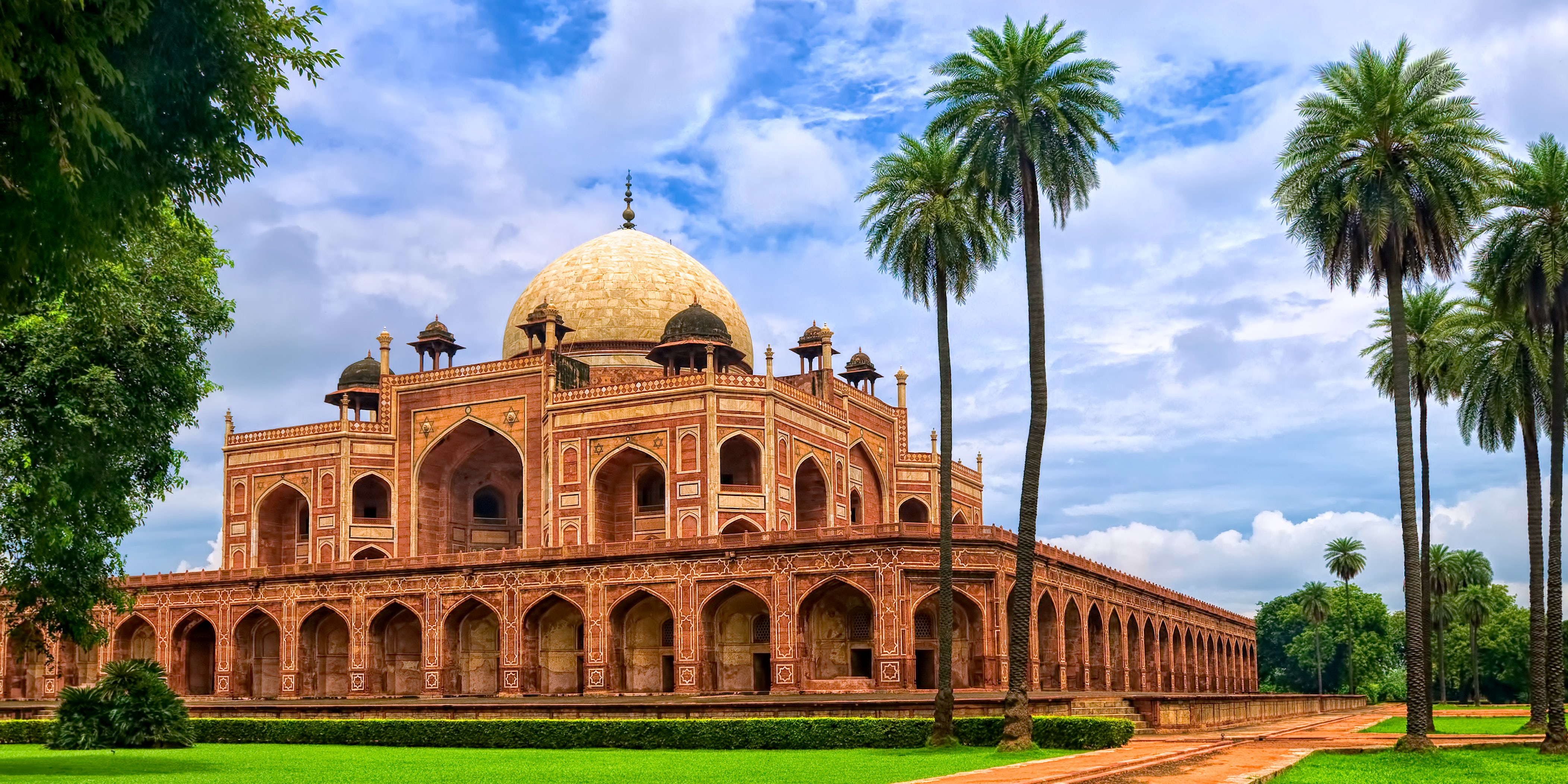
Embark on a journey to explore the centuries-old history of one of India’s most iconic monuments – Humayun’s Tomb! Learn about its architecture, timings, address and other important details while also discovering many unknown facts about this magnificent structure.
Humayun's Tomb is one of the most significant monuments in India. Located in New Delhi, it was built in the 16th century and is an early example of Mughal architecture. The tomb was commissioned by Humayun's wife, Hamida Banu Begum, and designed by Mirza Ghiyasuddin.
It is said to be the first garden-tomb on the Indian subcontinent, and its design strongly influenced subsequent tomb construction in the Mughal Empire. It was also the first Structure to use red sandstone at such a scale. The tomb is located in a 42-acre charbagh (four quadrant garden).
The complex includes a mosque and a guest house, and was enclosed by high walls until 1926 when they were replaced by iron railings. Today, the monument is open to the public and is a popular tourist destination.
The tomb of Humayun in Delhi is an early example of Mughal architecture. The tomb was commissioned by Humayun's widow, Queen Hamida Banu Begum, in 1562 CE, and designed by Mirak Mirza Ghiyas and his son, Sayyid Muhammad. It was the first garden-tomb on the Indian subcontinent, and is located in what now serves as the entrance to Nizamuddin East, a locality of South Delhi.
The tomb was declared a UNESCO World Heritage Site in 1993, and since then has undergone extensive restoration work. It is one of the most popular tourist destinations in Delhi, and receives hundreds of thousands of visitors every year.
The history and significance of Humayun's Tomb are closely intertwined. The tomb is not only a remarkable example of Mughal architecture, but also holds great historical and cultural significance. For centuries, it has been a place of pilgrimage for Muslims from all over India. In more recent times, it has become an important symbol of India's composite culture and its rich architectural heritage.
The tomb of Humayun is an early example of Mughal architecture. The tomb was commissioned by Humayun's son, Akbar, and designed by Mirak Mirza Ghiyas and his son, Shiraz Ali. It was the first garden-tomb on the Indian subcontinent, and is located in Nizamuddin East, Delhi, India. The tomb complex is a World Heritage Site.
The tomb is of red sandstone and is surrounded by a double-storeyed arcade comprising of arched cells. The mausoleum itself is a square chamber surmounted by a double dome. There are chhatri-like kiosks (open pavilions) on all four sides of the main tomb chamber that add to the height of the building. Each kiosk has three arched openings that provide views of the garden below.
The main entrance to the tomb complex is through a massive gateway on the western side. This gateway leads into a large courtyard, which was once used as a cricket ground during British colonial rule. Beyond this courtyard lies the actual tomb complex containing the mausoleum of Humayun, as well as several other smaller monuments.
The most notable feature of Humayun's Tomb is its double dome. This was a new feature introduced in Mughal architecture, and was later adopted in several other buildings such as the Taj Mahal.
There are several other monuments within the Humayun's Tomb complex, including the tomb of Isa Khan Niyazi, a nobleman in Sher Shah Suri's court. The complex also contains the tombs of Humayun's barber and his favourite elephant. Another notable monument is the Afsarwala Tomb, which belonged to a eunuch in the Mughal court.
The tomb is open to the public from sunrise to sunset. The best time to visit is during the cooler months of October to March. The tomb is closed on Mondays.
The address of the tomb is Nizamuddin East, New Delhi, Delhi 110013, India
If you're planning on visiting Humayun's Tomb, here are a few tips to make the most of your experience:
- aim to go early in the morning or late in the afternoon to avoid the hottest part of the day
- wear comfortable shoes as there is a lot of walking involved
- take a bottle of water with you to stay hydrated
- try to visit on a weekday if possible as it can get quite busy at weekends
The tomb of Humayun is located in Nizamuddin East, New Delhi. It can be reached by taking the Metro to the Jorbagh station and then walking for about 10 minutes. The tomb is open from sunrise to sunset and there is no entry fee.
Humayun's Tomb is an iconic landmark in Delhi and a great place to visit for history lovers. It stands as a testament to the great Mughal Empire, with its intricate architecture and lush gardens. Whether you’re looking to explore India’s rich heritage or just take some pictures of its beautiful monuments, Humayun’s Tomb should definitely be on your list of places to visit! With reasonable timings and easy access from nearby stations, it won't be hard for you to make the trip. So if you're planning on visiting Delhi soon, don't forget about this architectural marvel!